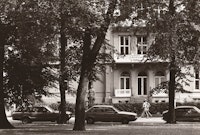Although numerous attempts had already been made to create a higher music education institution in Norway, it was only when the organ school opened in 1883 that the country got a viable music conservatoire. The school was a private enterprise, and it would take 90 years before the state stepped in to create Norway’s first public music academy. The idea of a state-run music academy was first floated at the time of Ole Bull and Edvard Grieg but only came to fruition in 1973. Here is a timeline of the process culminating in the creation of the Norwegian Academy of Music along with some key milestones between 1973 and the present day.
The Norwegian Academy of Music: A Timeline
The Norwegian Academy of Music was founded in 1973, but its origins date back to the establishment of Lindeman’s organ school in 1883.
From organ school to conservatoire
Father and son Ludvig Mathias and Peter Brynie Lindeman opened their organ school (Lindemans Organistskole) on 1 October 1883, initially with 12 students. Soon after the opening, King Oscar II announced that he would provide annual funding for four additional free places. Although the organ school was a private institution, the state provided funding to cover tuition fees for talented candidates of limited means right from the outset. When the school’s launch was announced in September 1883, Kristiania’s newspapers wrote that it would be offering “the following classes: organ-playing and harmony as well as elective subjects, piano-playing and rudimentary singing”.
Rapid growth
The organ school grew quickly, and in 1885 it enrolled 70 students. That same year the institution moved into new rented premises. The range of available classes also expanded considerably, leading to it being renamed Musik- og Organistskolen. Ludvig Mathias Lindeman died in 1887, leaving Peter Lindeman as the sole director of the institution. Following several relocations, in 1892 Peter Lindeman bought Nordahl Bruns Gate 8 and made it the school’s permanent base. The institution had continued to expand, and by the time it moved into its new home it had around 175 students. Having gradually adopted the term “conservatoire”, the school changed its official name to Musik-Konservatoriet in 1894.
Student numbers swelled from 800 to a record 1,000 in the period 1914–18. It is worth remembering that they were not full-time students, however. The students were mostly able to decide for themselves how many, and which, subjects to study, and the conservatoire offered tuition to anyone from complete beginners to professional musicians (e.g. organ exams). Peter Lindeman ran the conservatoire until his death in 1930, the final two years working closely with his son Trygve. Trygve Lindeman was formally made director after his father’s death, and under his management the conservatoire entered a golden era. The institution continued to grow, and by 1945 it had almost 2,000 students.

Student numbers swelled from 800 to a record 1,000 in the period 1914–18. It is worth remembering that they were not full-time students
in growth
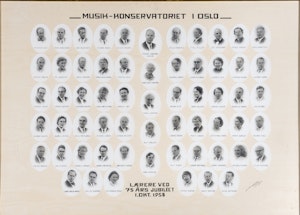
From conservatoire to state academy
Several unsuccessful attempts to set up a state-owned music academy in Norway had been made since the 19th century. The Lindeman family even offered to pass on the running of the conservatoire to the state on a number of occasions, but each time the issue was raised a number of obstacles would emerge. For example, it was not a given that a state music academy would necessarily be sited in Oslo. Influential arts personalities in Bergen called for any new academy to be located in Western Norway. There was also disagreement over the profile and size of a potential new academy. While a broad-based orchestral profile was wanted by some, others argued in favour of a more exclusive elite training programme for soloists.

Strategic moves
By the 1960s prospects for a state-run music academy were looking brighter. Towards the end of the decade the conservatoire made strategic moves to ready the institution to become a state academy. Trygve Lindeman stepped down in 1969. Having been a family firm owned and run by the Lindeman family for three generations, the ownership and management were transferred to the newly created Lindeman Foundation. Anfinn Øien was appointed principal of the conservatoire and Einar Solbu director of studies. In the period 1960–73 the foundation and conservatoire management were working actively to prepare for a state takeover. The institution was split into two: one tertiary vocational department and one conservatoire department, the latter designed to pave the way for a music academy. By 1970 study plans had been created for all conservatoire-level courses. These were important steps in formalising the conservatoire’s study programmes.
A marginal parliamentary majority (57 against 52 votes) decided that the music academy should be located in Oslo rather than Bergen.
to locate the Academy of Music?
Parliament endorses state-run music academy
On 28 April 1972, more than 100 years after Norwegian parliamentarians first debated the possibility of a state-run music academy, parliament voted to establish a national academy of music. By this time there was already broad agreement that an academy should be established, but the issue of where it would be located had flared up once again. A marginal parliamentary majority (57 against 52 votes) decided that the music academy should be located in Oslo rather than Bergen. This allowed the academy to build on the existing conservatoire department at the Oslo conservatoire as had been proposed by the Lindeman family and the new foundation. The conservatoire’s vocational department was transferred to Oslo city council and repurposed as a music programme at Foss upper secondary school. The 1972–73 academic year marked both a new beginning and an end: it was the final year of the conservatoire and the first year of planning for the Norwegian Academy of Music.
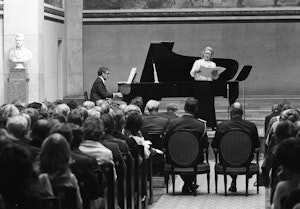
Official opening
The Norwegian Academy of Music celebrated its launch on 3 September 1973 with a big gala concert in the University Aula. King Olav, leading politicians, representatives of key institutions and a number of arts personalities were in attendance. The academy’s new professors featured on the programme. The concert opened with the academy’s recently appointed principal, Robert Levin, accompanying violin professor Arve Tellefsen in the first movement of Grieg’s C minor sonata. The concert then saw performances by the new professors of voice and piano Aase Nordmo Løvberg and Robert Riefling. Three songs by Norway’s first ever professor of composition, Finn Mortensen, also received their premiere during the concert.
Although the academy was a brand new state-owned institution, many things remained the same as at the old private conservatoire. Many of the teachers stayed on, and the study plans remained unchanged until 1975. The new academy was also housed in the conservatoire’s old premises. Its main building was still Nordahl Bruns Gate 8, although the academy also rented a number of other sites, including at Universitetsgata 10 and Wergelandsveien 21.
The concert opened with the academy’s recently appointed principal, Robert Levin, accompanying violin professor Arve Tellefsen in the first movement of Grieg’s C minor sonata. The concert then saw performances by the new professors of voice and piano Aase Nordmo Løvberg and Robert Riefling.
3 September 1973
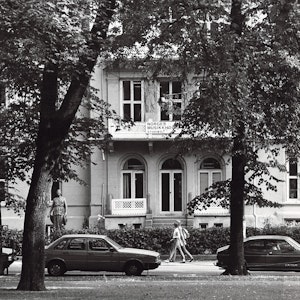
A specialised university
The Norwegian Academy of Music was granted status as a specialised university when it opened in 1973 with 300 study places. The academy was initially run on a provisional basis, but on 30 November 1976 parliament resolved that the academy should “be considered a permanent higher education institution located in Oslo”. The academy was operating under the name of “Musikkhøgskolen” at the time, even though the management had repeatedly asked the ministry to change it. The name of the academy was only changed as part of the budget negotiations in parliament in December 1977, and the institution has been known in Norwegian as “Norges Musikkhøgskole” (NMH) since 1978.
The road to Majorstua
At the time of the opening in 1973 the issue of consolidating the institution under one roof was already high on the agenda for the institution’s management. The fight to get its own home would prove to be longer than they had anticipated. The road from Nordahl Bruns Gate to Slemdalsveien would be very long indeed.
By 1977 the housing question looked like it would be resolved. The plan was for the NMH to move into the Norwegian Geographical Survey’s buildings at St Olavs Gate 32 in central Oslo, but it then emerged that the NMH was not the only state institution with its eyes set on that site. Despite widespread media coverage of the academy’s pressing need for better premises, the NMH failed to win through. In 1978 it was decided to give the property to the National Academy of Art.
Marching for a better home
That same year, 1978, a new proposal was tabled: a site in Majorstua. The site had potential, but little happened and the years passed. The academy’s 10th anniversary in 1983 was used to raise awareness of the need for better premises. On 19 October the academy organised a protest march from Nordahl Bruns Gate via the government quarter to parliament. The demonstration attracted widespread media coverage. At Christmas the academy sent audio recordings to key politicians of students and teachers performing Verdi’s Slave Chorus with new lyrics written for the occasion: “Give us solace, give us hope of a new home.”
Construction begins
The renewed attention around the housing issue yielded results. October 1984 brought news of funding being allocated in the government budget for preliminary planning of a new home for the NMH. The announcement was celebrated with a big party in the backyard in Nordahl Bruns Gate. Now work could begin on realising a new building. An array of unforeseen challenges would arise along the way, but all of them were overcome. On 29 April 1987 Crown Princess Sonja laid the foundation stone, and on 1 January 1989 the NMH moved into its new home. The institution had finally come together under one roof, at Slemdalsveien 11. The big concert hall in the building is known as the Lindeman Hall in recognition of the institution’s long history.
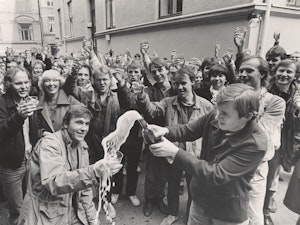
Expansion
During the 1990s and early 2000s the NMH expanded its activities considerably. The most literal expansion of the institution took place in 1996. As part of a wider national restructuring of higher education which saw smaller institutions amalgamate with larger institutions, the NMH merged with the Østlandets Musikkonservatorium (ØMK). This led to an increase in both staff and students. The range of courses offered also increased. Music therapy became part of the NMH's offerings as a result of the 1996 merger
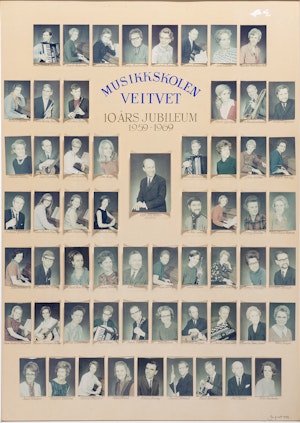
Broadening the repertoire
This period also saw the academy embrace new genres. Sven Nyhus, who had been affiliated to the NMH as an associate professor since the 1990s, was in 1995 granted Norway’s first full professorship in folk music. While it had been possible to study other genres on the music education programme, the performance programmes were long the exclusive preserve of classical musicians. Since 2002 the NMH has been offering three different programmes: classical, folk music and improvised music / jazz. Soon the academy launched an individual concentration bachelor programme for students whose musical styles do not fit, or combine, the aforementioned genres.
The academy’s expansion posed new logistical challenges. When the NMH and ØMK merged in 1996 the initial plan was for the two institutions to co-locate in Majorstua. That meant they needed more space. The building in Slemdalsveien was designed for 300 students, the same number as in 1973. After the merger the academy needed to accommodate 465 students. The extended study programmes also required new and different facilities. As a temporary solution, the institution split up again in 1996 with one campus in Majorstua and one in Carl Berners Plass. The co-location plans were only completed in 2007, when the extension in Majorstua opened its doors.
The extended study programmes also required new and different facilities.
posed new logistical challenges.
Doctoral studies
Another addition to the institution’s activities was a growing focus on research. Following multiple applications, in 1998 the NMH was accredited to offer doctoral programmes in music education, music therapy and performance practice. These were scientific doctoral programmes, and the first viva voce was held in 2002. At the same time work was underway to create a parallel programme in “artistic development work”, a term which in 1995 was given equal status to “research” in the Universities and University Colleges Act. In 2003 a nationwide grant programme for artistic research was established with the NMH as a key contributor.
A modern music academy
The Norwegian Academy of Music currently has just over 600 students. The academy offers a wide range of music-related bachelor, master and PhD programmes. It also offers short courses, in-service training and continuing education programmes.
Amongst recent milestones we can mention the creation of a national centre of excellence in education, CEMPE (Centre of Excellence in Music Performance Education). The centre’s original five-year mandate was extended to ten years in 2017. In 2018 the NMH was accredited as a provider of doctoral programmes in artistic research. It is currently offering two PhD programmes: one scientific and one artistic. All doctoral candidates and senior researchers are affiliated to one of the academy’s research centres: NordART (the Arne Nordheim Centre), CERM (Centre for Educational Research in Music) or CREMAH (Centre for Research in Music and Health).
The NMH is Norway’s largest higher music education institution with roots going back to the country’s oldest music conservatoire. The institution consistently ranks highly in international music education tables and plays an important role in music education both domestically and internationally.
Published: Jun 15, 2020 — Last updated: Dec 12, 2024
